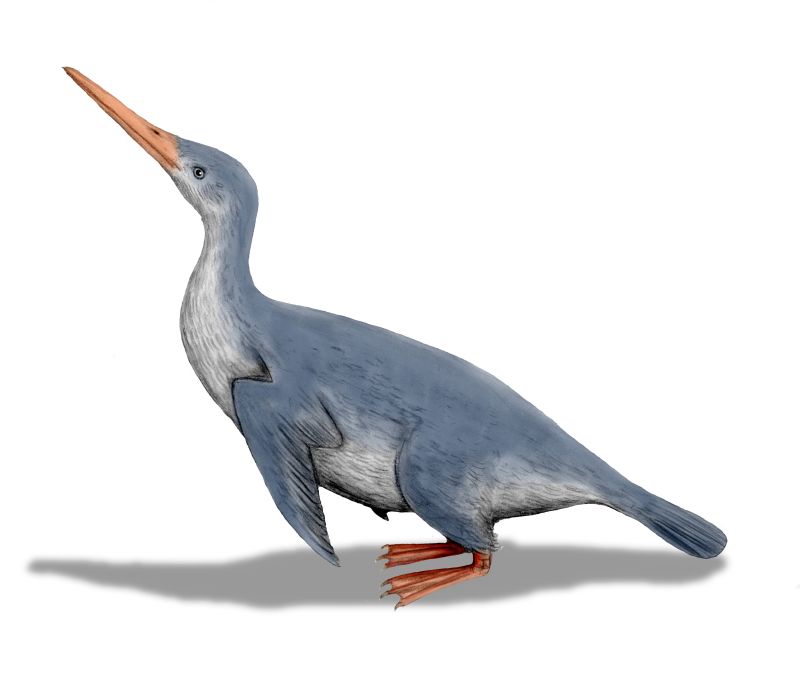- Waimanu
Taxobox
name = "Waimanu"
fossil_range = Middle - LatePaleocene

image_width = 250px
status = EX
status_system = iucn3.1
regnum =Animal ia
phylum = Chordata
classis = Aves
ordo =Sphenisciformes
genus = "Waimanu"
genus_authority = Slack, Jones, Ando, Harrison, Fordyce, Arnason & Penny,2006
subdivision_ranks = Species
subdivision =
* "Waimanu manneringi" (type)
* "Waimanu tuatahi""Waimanu" was a
genus of earlypenguin which lived soon after theCretaceous-Tertiary extinction event . This means that the radiation of the "Neoaves" that include most modern birds either took place before the extinction of thedinosaurs , or it must have been extremely rapid in geological terms. DNA-studes, e.g. the extensive one by Hackett et al (2008) [A Phylogenomic Study of BirdsReveals Their Evolutionary History, Shannon J. Hackett et. al., SCIENCE VOL 320 27 JUNE 2008 ] seem to indicate the latter. While it was a very early member of thesphenisciformes , "Waimanu" was flightless (like all modern members of its order). Though its wing bones do not show the extreme specializations modern penguins have for an aquatic lifestyle, it does seem adapted for wing-propelled diving, and may have resembled a flightlessloon in body shape and maybe theGreat Auk in its way of locomotion. DNA sequence analyses and anatomy argue for a close relationships of penguins and loons, the former lineage specializing for wing-propelled and the latter for foot-propelled diving.Discovered in
Canterbury, New Zealand riverbed sediments (near theWaipara River ) of thegreensand of theWaipara Formation in 1980, the name "Waimanu" comes from Māori for "waterbird". Two species are known, "Waimanu manneringi" from theMiddle Paleocene about 60million years ago (mya) and "Waimanu tuatahi" from theLate Paleocene , perhaps 58 mya.References
* Slack, K.E.; Jones, C.M.; Ando, T.; Harrison G.L.; Fordyce R.E.; Arnason, U. & Penny, D. (2006): Early Penguin Fossils, plus Mitochondrial Genomes, Calibrate Avian Evolution. "Molecular Biology and Evolution" 23(6): 1144-1155. DOI|10.1093/molbev/msj124 [http://mbe.oxfordjournals.org/cgi/reprint/23/6/1144 PDF fulltext] [http://mbe.oxfordjournals.org/cgi/content/full/msj124/DC1 Supplementary Material]
External links
* [http://www.otago.ac.nz/geology/features/paleontology/waimanu.html Waimanu research group official website.]
* [http://scienceblogs.com/pharyngula/2006/03/waimanu.php Images of "Waimanu" specimens and a phylogram of early birds.]
Wikimedia Foundation. 2010.
